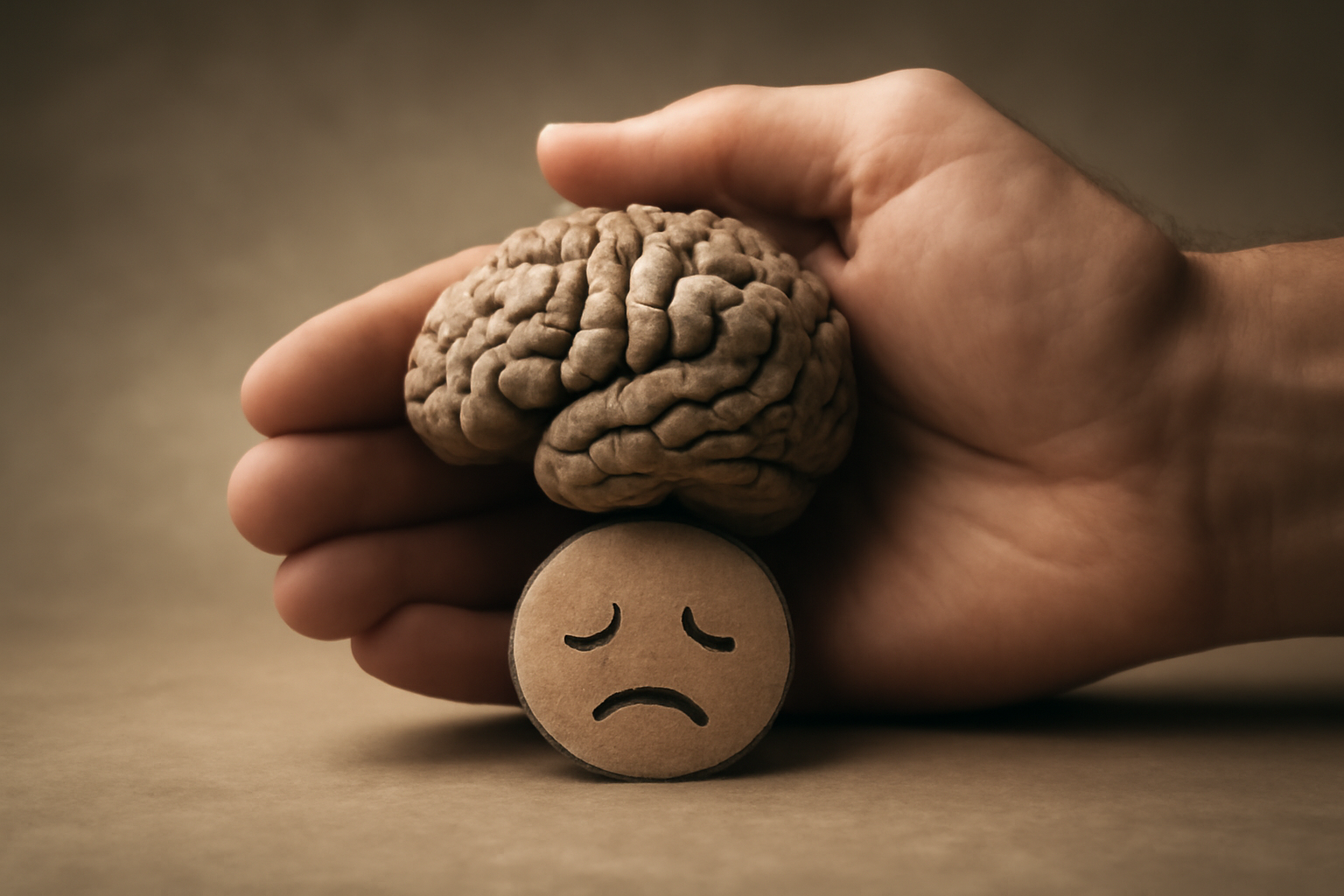Affective disorders, also known as mood disorders, are among the most common mental health conditions worldwide. They involve patterns of mood that disrupt daily life, energy, sleep, and thinking. They are not signs of weakness or personal failure, and with accurate assessment and evidence‑based care, many people experience meaningful improvement and regain a good quality of life.
Common myths—such as “it’s just bad luck,” “you can snap out of it if you try hard enough,” or that these problems only happen to certain people—minimize a real, treatable set of conditions rooted in biology, genetics, and environment. Mood disorders arise from a mix of factors including brain chemistry, life experiences, and family history.
Definition and diagnostic criteria

Affective disorders are mood disorders that affect how someone feels, thinks, and functions. The main categories are major depressive disorder (MDD), bipolar I disorder, bipolar II disorder, and cyclothymic disorder. These conditions can vary in severity, duration, and how they affect daily life.
Major depressive disorder (MDD)
MDD involves a persistent low mood or loss of interest in most activities, along with a cluster of symptoms that cause distress or impairment. To be diagnosed with MDD, a person typically must have:
- At least five of the following symptoms during the same two-week period, with at least one being depressed mood or anhedonia (loss of interest or pleasure): depressed mood most of the day, markedly diminished interest or pleasure, significant weight loss or gain or changes in appetite, insomnia or hypersomnia, psychomotor agitation or retardation, fatigue or loss of energy, feelings of worthlessness or excessive guilt, diminished ability to think or concentrate, and recurrent thoughts of death or suicide.
- These symptoms cause clinically significant distress or impairment in social, occupational, or other important areas of functioning.
- The symptoms are not attributable to a substance or another medical condition.
Bipolar I and Bipolar II disorders
Bipolar disorders are characterized by shifts in mood between depressive and elevated (manic or hypomanic) states. Key distinctions:
- Bipolar I: At least one manic episode lasting at least one week (or any duration if hospitalization is necessary), which may be preceded or followed by hypomanic or depressive episodes. Mania often causes marked impairment or psychotic features.
- Bipolar II: At least one hypomanic episode (lasting at least four consecutive days) and at least one major depressive episode, with no history of a manic episode.
Manic symptoms may include inflated self-esteem or grandiosity, decreased need for sleep, more talkative than usual, racing thoughts, distractibility, increased goal-directed activity or risky behavior, and urgency to engage in activities with potential negative consequences. Hypomania resembles mania but is less severe and does not cause the same level of impairment or psychosis. A depressive episode in bipolar disorder resembles MDD.
Cyclothymic disorder
Cyclothymia involves chronic, fluctuating mood symptoms—numerous periods of hypomanic symptoms that do not meet criteria for a hypomanic episode and numerous periods of depressive symptoms that do not meet criteria for MDD—for at least two years in adults (one year in children or adolescents). The mood changes are present more days than not and cause distress or impairment.
Other considerations
Specifiers may apply to mood disorders, including with anxious distress, with psychotic features, or with seasonal pattern (for example, seasonal affective components). Treatments and prognosis can differ depending on the specific disorder and its features.
Symptoms and signs
Symptoms vary by condition, but some patterns are common across affective disorders:
- Depressive symptoms: persistent sadness or emptiness, loss of interest in activities, fatigue, sleep disturbances (too much or too little), changes in appetite, slowed thinking or movements, feelings of guilt or worthlessness, difficulty concentrating, and thoughts of death or suicide.
- Manic symptoms (bipolar disorders): elevated or expansive mood, unusually high energy, decreased need for sleep, rapid or pressured speech, distractibility, inflated self-esteem, risk-taking or impulsive behavior, and increased goal-directed activity.
- Hypomanic symptoms: similar to manic symptoms but less intense and not causing severe impairment or psychosis; may be noticeable to others but not as disruptive.
- trong> mood symptoms can occur alongside anxiety, sleep disorders, or substance use; the presence of mixed features (simultaneous depressive and manic symptoms) can complicate assessment and treatment.
Causes and risk factors
Affective disorders arise from an interplay of several factors. While no single cause explains all cases, recognizing risk factors helps with prevention, early detection, and treatment planning.
- Genetics and family history: A family history of mood disorders increases risk. Heritability is strongest for bipolar disorder but also plays a notable role in major depressive disorder.
- Neurobiology and brain chemistry: Imbalances in neurotransmitters such as serotonin, norepinephrine, and dopamine, along with differences in brain circuits involved in mood regulation, are linked to mood disorders.
- Life events and environment: Chronic stress, trauma, abuse, major losses, or job and relationship difficulties can trigger or worsen mood symptoms, especially in those with vulnerability.
- Sleep and circadian rhythms: Disrupted sleep patterns and irregular schedules can contribute to mood instability and episodes.
- Medical conditions and medications: Thyroid disorders, vitamin deficiencies, chronic illness, and certain medications can mimic or worsen mood symptoms.
- Substance use and withdrawal: Alcohol and drugs can precipitate or exacerbate mood problems.
- Life stage and biology: Hormonal changes (e.g., postpartum period) and aging may influence mood disorders in some people.
How it’s diagnosed by professionals
Diagnosis typically involves a comprehensive clinical assessment by a qualified professional, such as a psychiatrist, psychologist, or primary care clinician. The process often includes:
- A thorough history of mood symptoms, duration, severity, impact on functioning, and triggers.
- Standardized questionnaires help quantify symptoms and monitor changes over time (for example, PHQ-9 for depression or MDQ for bipolar risk).
- Physical exams and sometimes laboratory tests to rule out medical conditions that could mimic mood symptoms (thyroid tests, vitamin B12, anemia, metabolic issues).
- Information from family or close contacts can help verify symptom onset and impairment.
- Clinicians consider other mental health conditions (anxiety disorders, ADHD, personality disorders, substance-induced mood disorders) and rule out medical causes.
Treatment approaches and options
Treatment is personalized and often multimodal, combining psychotherapy, medications, and lifestyle strategies. The goal is to reduce symptoms, improve functioning, and prevent relapse.
Psychotherapy (talk therapy)
- Cognitive-behavioral therapy (CBT): Helps identify and modify unhelpful thoughts and behaviors that contribute to mood symptoms.
- Interpersonal therapy (IPT): Focuses on personal relationships and life events that affect mood.
- Family-focused therapy: Involves family members to improve communication, reduce stress, and support treatment adherence.
- Behavioral activation: Encourages engagement in rewarding activities to counteract withdrawal and anhedonia.
- trong> Provides information about the disorder, treatment options, and self-management strategies.
Medications
- Major depressive disorder: Antidepressants such as selective serotonin reuptake inhibitors (SSRIs), serotonin-norepinephrine reuptake inhibitors (SNRIs), bupropion, or mirtazapine. In some cases, augmentation with another agent or short-term use of multiple medications may be appropriate. In bipolar disorder, antidepressants are used cautiously and usually with a mood stabilizer to reduce the risk of triggering mania.
- Bipolar disorder: Mood stabilizers (lithium, lamotrigine, valproate), and/or atypical antipsychotics (e.g., quetiapine, lurasidone, olanzapine) to prevent mood swings. Antidepressants may be used selectively and with supervision.
- Other considerations: Sleep aids or anti-anxiety medications may be used short-term in some cases; treatment plans often combine several approaches for best results.
Other treatments and lifestyle approaches
- Neuromodulation: Electroconvulsive therapy (ECT) remains a highly effective option for severe or treatment-resistant depression and certain bipolar presentations. Repetitive transcranial magnetic stimulation (rTMS) and, in some cases, ketamine/esketamine are used for resistant symptoms.
- Lifestyle factors: Regular physical activity, healthy sleep routines, balanced nutrition, and stress management can improve outcomes and complement other treatments.
- Safety planning and crisis resources: For any mood disorder, careful assessment of suicide risk is essential, with steps in place to ensure safety during periods of high risk.
- Special considerations: Medication choices may be adjusted during pregnancy or breastfeeding, and care should coordinate with obstetricians.
Prognosis and living with the condition
The course of affective disorders varies widely. Some people experience a single episode and then long remission, while others have recurrent episodes over years. With timely, evidence-based treatment and ongoing management, many individuals achieve substantial reduction in symptoms and improved functioning. Staying engaged with care, adhering to treatment plans, addressing sleep and stress, and cultivating supportive relationships are key factors in a favorable outcome. It is common to need adjustments in treatment over time, and many people benefit from a combination of medication, psychotherapy, and lifestyle changes rather than any one approach alone.
Living well with a mood disorder also involves reducing stigma, seeking help early, and building a crisis plan. Work, school, and relationships can improve when mood symptoms are managed, and many people return to or establish meaningful activities with appropriate support and accommodations as needed.
Support resources
If you or someone you know may be experiencing symptoms of an affective disorder, professional help is available. Below are reputable organizations and resources that provide education, screening tools, helplines, and support networks.
- National Institute of Mental Health (NIMH) — Depression
- National Institute of Mental Health (NIMH) — Bipolar Disorder
- Mayo Clinic — Bipolar Disorder
- National Alliance on Mental Illness (NAMI) — Bipolar Disorder
- World Health Organization — Depression Fact Sheet
- Depression and Bipolar Support Alliance (DBSA)
- Mayo Clinic — Depression
- Mental Health America (MHA) — Resources and Screening
If you are in immediate danger or considering harming yourself, please seek emergency help right away or contact a local crisis line. You are not alone, and help is available.
⚠️ This content is for informational purposes only and is not a substitute for professional medical advice, diagnosis, or treatment. Always consult a licensed physician, psychiatrist, or other qualified health professional before making decisions about medications or mental health treatment.

